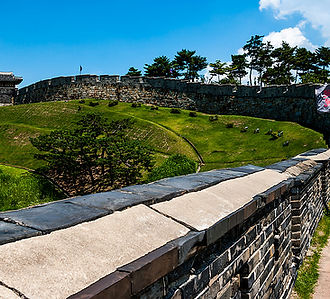Tour Spot

Built in 1395, Gyeongbokgung Palace is also commonly referred to as the Northern Palace because its location is furthest north when compared to the neighboring palaces of Changdeokgung (Eastern Palace) and Gyeonghuigung (Western Palace) Palace. Gyeongbokgung Palace is arguably the most beautiful, and remains the largest of all five palaces.
The premises were once destroyed by fire during the Imjin War (Japanese Invasions, 1592-1598). However, all of the palace buildings were later restored under the leadership of Heungseondaewongun during the reign of King Gojong (1852-1919).

With 63 floors measuring a total height of 264 meters, 63 Building is Korea’s tallest and most recognized building. 63 Building boasts spectacular views of the Hangang River and the surrounding Bugaksan, Namsan and Gwanaksan Mountains.
63 Building has undergone considerable renovation and the basement floor boasts convenience facilities including 63 Sea World, 63 IMAX theater, the nation's largest buffet restaurant “Buffet Pavilion,” and a host of other restaurants.

Gyeongju Donggung Palace and Wolji Pond were the secondary palace site which was used for the palace of the Crown Prince along with other subsidiary buildings and it also was the banquet room for important national event and important visitors. After the fall of Silla, followed by Goryeo and Joseon, the site was named ‘Anapji’ instead. Later, a fragment from a pottery which the carved letter “Wolji” was found in 1980s and it revealed that Wolji contained the meaning of the pond reflecting moon. Thus, the name ‘Anapji’ was changed to the current - ‘Donggung Palace and Wolji Pond.

Bulguksa Temple is the representative relic of Gyeongju and was designated as a World Cultural Asset by UNESCO in 1995. The beauty of the temple itself and the artistic touch of the stone relics are known throughout the world.
Bulguksa Temple was built in 528 during the Silla Kingdom, in the 15th year of King Beop-Heung's reign (514-540). The temple was originally called ‘Hwaeom Bulguksa Temple’ or ‘Beopryusa Temple’ and was rebuilt by Kim Dae-Seong (700-774), who started rebuilding the temple in 751 during the reign of King Gyeong-Deok (r. 742-765) and completed it in 774 during the reign of King Hye-Gong (r. 765-780). Upon completion, the temple’s name was changed to Bulguksa.

Seongsan Ilchulbong Peak rose from under the sea in a volcanic eruption over 100,000 years ago. Located on the eastern end of Jejudo Island, there is a huge crater at the top of Seongsan Ilchulbong Peak. The crater is about 600m in diameter and 90m high. With the 99 sharp rocks surrounding the crater, it looks like a gigantic crown. While the southeast and north sides are cliffs, the northwest side is a verdant grassy hill that is connected to the Seongsan Village. The ridge provides an ideal spot for walks and for horse riding as well.
The sunrise from the crater is magnificent. Also the Seongsan Ilchulbong Peak surrounded by bright yellow colored rapeseed flowers in the spring is truly a sight to behold.

Seopjikoji is located at the end of the eastern shore of Jeju Island. "Seopji" is the old name for the area, and "Koji" is Jeju dialect meaning a sudden bump on land. On Koji hill which is wide and flat, there stands a stone Bongsudae called “Hyeopjayeondae” with a 4m height and 9m length and width that has retained its original form.
Seopjikoji was the filming site of "Gingko Bed," "The Uprising," "One Thousand and One Nights" and other Korean TV dramas. Nearby attractions include Jeju Folk Village and Udo Island as well.

Hwaseong Fortress is an impressive structure from the latter part of the Joseon Dynasty (1392-1910) and the official fortress of Suwon-si, Gyeonggi-do. The fortress (constructed from 1794 to 1796) was built as a show of the King’s filial piety towards his father Jangheonseja and to build a new pioneer city with its own economic power.
The fortress wall stretches for a total of 5.52km and has a great variety of military facilities that’s hard to find anywhere else. Four gates face each of the cardinal directions—Janganmun (north), Paldalmun (south), Changnyongmun (east), and Hwaseomun (west)—and the seven-arch style Sumun gates straddle the point where the nearby stream reaches the palace. Above the Sumun gates is a pavilion called Hwahongmun.